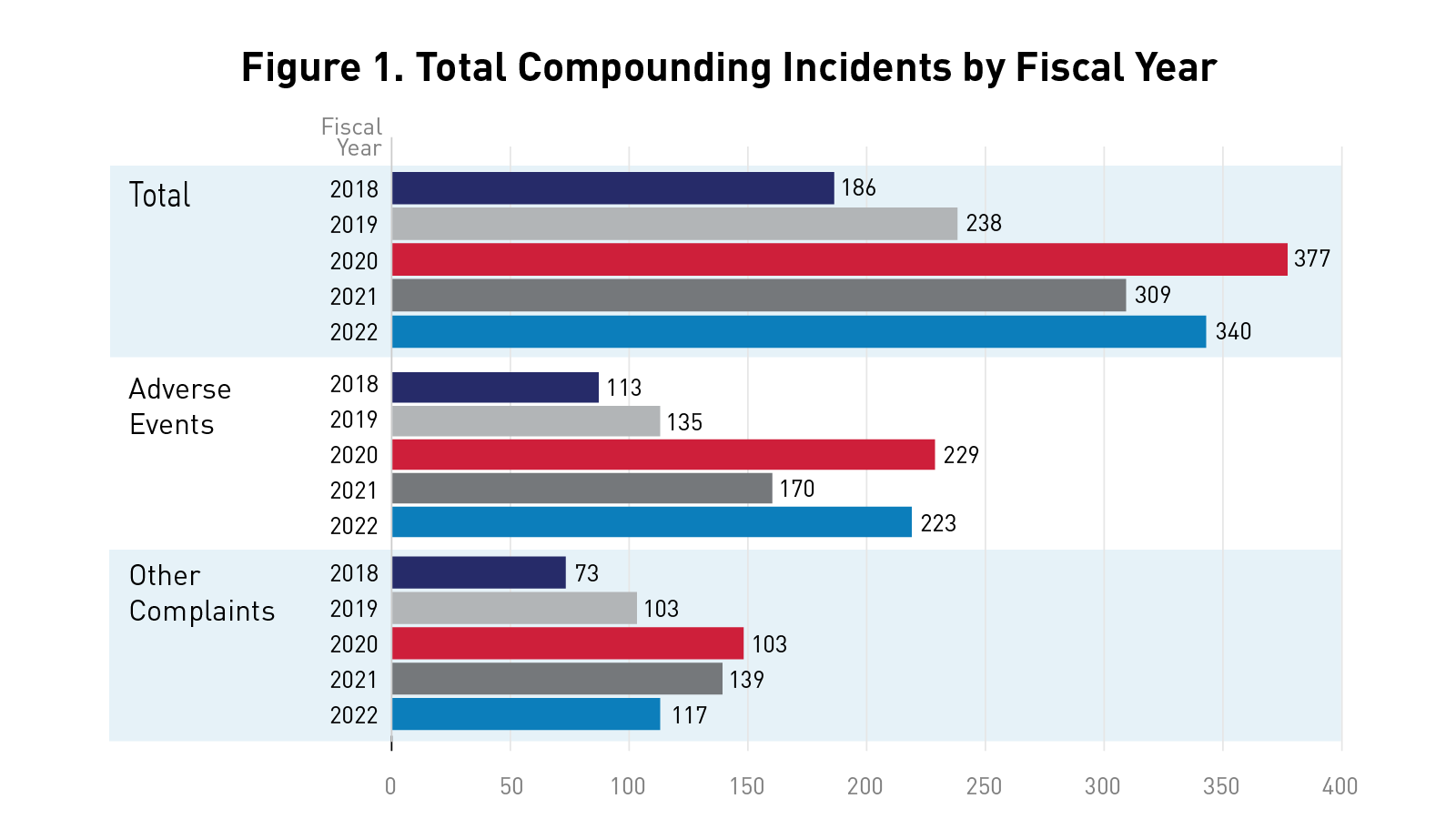FDA announced in October 2020 the standard Memorandum of Understanding Addressing Certain Distributions of Compounded Human Drug Products became available for signature by the states. This MOU is an agreement between state boards of pharmacy or other state agencies and FDA. The MOU addresses interstate distribution of inordinate amounts of compounded drugs and complaint investigation by a state regulator relating to compounded drugs distributed outside the state.
FDA developed the MOU in consultation with the National Association of Boards of Pharmacy (NABP), as described in section 503A of the Federal Food, Drug, and Cosmetic Act (FD&C Act). The MOU is a key public health protection in the law and is anticipated to help enhance communication and maximize federal and state resources for oversight of compounded drugs produced by traditional pharmacies.
Reducing the risks associated with compounded drugs
States, along with FDA, play a vital role in helping to reduce the risks associated with compounded drugs, while preserving appropriate patient access. For example, if a compounder distributes compounded drugs to multiple states, it can be difficult to gather information about adverse drug experiences and quality issues associated with those drugs, connect them to the compounder and take coordinated action to address a potentially serious public health problem. Close collaboration among states, and between states and the federal government may help prevent serious and widespread problems by helping to better identify adverse drug experiences and drug quality concerns across the country.
Information sharing network
FDA has entered into a cooperative agreement with NABP to establish an information sharing network available to the states. Through this network, FDA expects that states will have the option to collect, assess and review information about pharmacies in their states and share information with FDA as outlined in the MOU.
This tool is intended to provide an option for states and potentially reduce the resource burden of reporting under the MOU for states that choose to use it.
Expected benefits of the information sharing network:
- Information access: facilitate information sharing between state regulators and FDA on the distribution of compounded drugs interstate and complaints related to drugs compounded in the state and distributed outside the state
- Facilitate collaboration: enhance state and federal oversight and help regulators focus limited resources on compounders that present the greatest risk
- Streamlined identification: enable state regulators to identify pharmacies that distribute an inordinate amount of compounded drugs interstate and report that information to FDA
Complaint investigations
Under the MOU, states agree to investigate complaints about adverse drug experiences and drug quality issues related to drugs compounded at pharmacies within the state and distributed outside the state. States then notify FDA about adverse drug experience and drug quality issues relating to a drug compounded at a pharmacy, if serious, or by a physician as soon as possible, but no later than five business days after the state receives the complaint. This timeframe will facilitate collaboration between states and FDA on serious issues that have the potential to affect patients in multiple states.
Inordinate amounts and the 50% threshold for information sharing
Under the MOU, states agree to share certain information with FDA about pharmacies that distribute more than 50% of their compounded drug prescription orders interstate (see III.b.1 of MOU). The MOU, however, does not place a limit on the distribution of compounded drugs interstate by a pharmacy located in a state that has signed the MOU.
States that sign the MOU also agree to report to FDA if they become aware of a physician who is distributing compounded drugs interstate.
5% statutory limit on distributing compounded drugs out of the state
Section 503A of the FD&C Act limits distribution of compounded drugs outside the state by a licensed pharmacist, pharmacy or physician located in a state that has not signed the MOU to 5% of its total prescription orders dispensed or distributed.
Timeframe for signature
States may sign the MOU at any time. FDA is providing a period of one year, which concludes on October 27, 2021, for states to consider signing the MOU before it intends to enforce the 5% limit in section 503A of the FD&C Act in states that have not signed the MOU. This timeframe should correspond to a full legislative cycle for most states and allows time for states to modify their laws and regulations, if necessary.
Products not covered by the MOU
Products not covered by the MOU include:
- drugs intended for veterinary use
- repackaged drug products
- radiopharmaceuticals
- biological products subject to licensure under section 351 of the Public Health Service Act
- drugs compounded by outsourcing facilities under section 503B of the FD&C Act
Questions
See Memorandum of Understanding Addressing Certain Distributions of Compounded Drugs Questions and Answers for more information. Please email questions regarding the MOU to compounding@fda.hhs.gov.

1 comment:
I found your blog on Google and read a few of your other posts. I just added you to my Google News Reader. You can also visit Cheap Interstate Removalist for more Super GM Transport related information and knowledge, Keep up the great work Look forward to reading more from you in the future.
Post a Comment